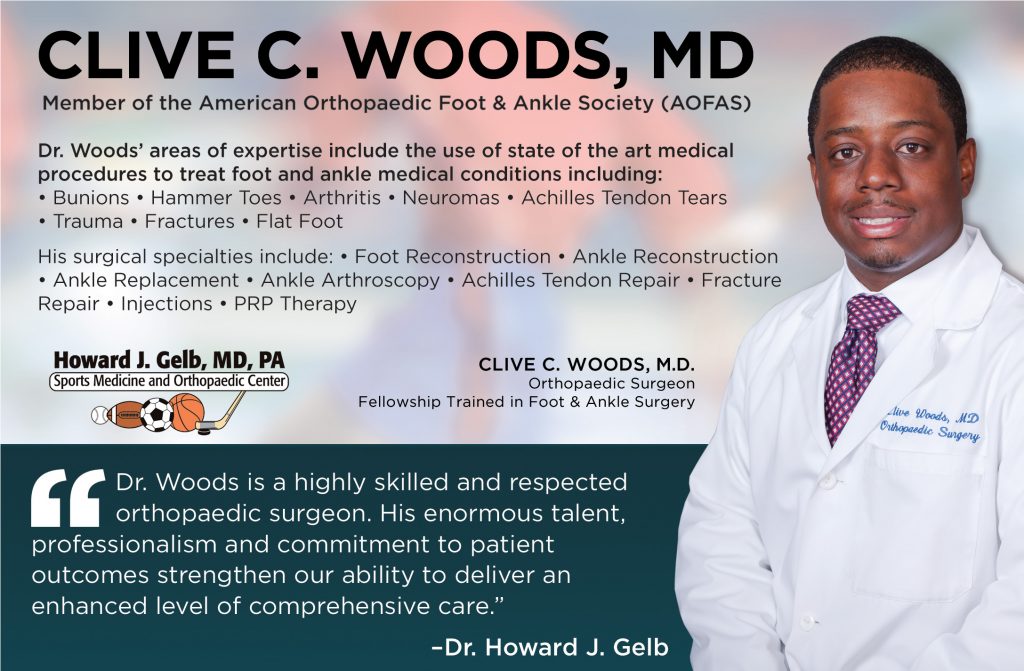By Dr. Clive C. Woods
A sprained ankle is one of the most common orthopaedic injuries, with approximately 25,000 sprains occurring daily in the United States. As slips and falls are most common in everyday life, sprains associated with them are common as well. However, there can be situations where slip and fall injuries can hinder life. According to slip and fall attorneys helping clients in Winter Haven, people can get legal help and compensation in such cases. Many people consider it “just a sprain” and fail to treat it with the respect it deserves. I am a fellowship trained foot and ankle orthopaedic surgeon, and see many patients who neglect ankle sprains months later and present with chronic ankle pain. The consequence of this neglect may lead to an unstable joint secondary to weakness, ligamentous laxity, and lack of confidence in the ankle to function properly. It is important to know how ankle sprains can be prevented and the manner in which they should be treated. You can even contact personal injury attorneys in Lacey or your neighborhood to know about compensations to take your treatment further. The ankle is held together by bands of elastic fibers called ligaments. A sprain results when one or more ligaments are stretched beyond its limit. In a severe sprain, the ligaments can tear partially or completely. Sprains occur when the foot turns inward (inversion) or outward (eversion) to an abnormal degree with respect to the ankle. Ankle sprains can occur from stepping on an uneven surface, particularly when wearing shoes with high heels; stepping wrong off a curb or into a hole. In athletics, common causes of sprains include landing or stepping on another player’s foot, or having to make quick directional changes, as in basketball, football and soccer. The recommended first aid for an ankle sprain from Coast 2 Coast First Aid Courses, begins with the acronym RICE: R for rest, I for ice, C for compression, and E for elevation. The ankle is wrapped in an Ace-type bandage, elevated higher than the heart and iced with a cloth-wrapped ice pack for 15-20 minutes once every hour. This should soon be followed by a visit to your orthopaedist to rule out any fractures and decide if immobilization is necessary. Immobilization using a brace or boot provides stability to the ankle and allows the ligaments to rest and heal, thus reducing the risk of further injury. An anti-inflammatory medication may be recommended and crutches provided for a few days if the ankle is too painful to bear weight. Physical therapy plays an important role in the rehabilitation of ankle sprains. During physical therapy different interventions are utilized such as stretching the calf to create adequate mobility, strengthening the surrounding musculature to allow the ankle to be more stable, modalities for pain relief, as well as balancing for joint stability. As the ankle gains strength and stability, more sports specific activities such as jumping, hopping, running, and cutting are incorporated in preparation for return to play.
Dr. Woods completed his foot & ankle fellowship at the esteemed Florida Orthopaedic Institute in Tampa Bay, FL and received his medical degree from Meharry Medical College in Nashville, TN where he was a member of Alpha Omega Alpha Medical Honor Society.
While completing his internship and residency programs at University of Miami’s Jackson Health System, Dr. Woods provided world class treatment for a variety of South Florida patients – including University of Miami Hurricanes athletes.
Howard J. Gelb, MD, PA Sports Medicine & Orthopaedic Center
(561) 558-8898 • www.GelbMD.com


